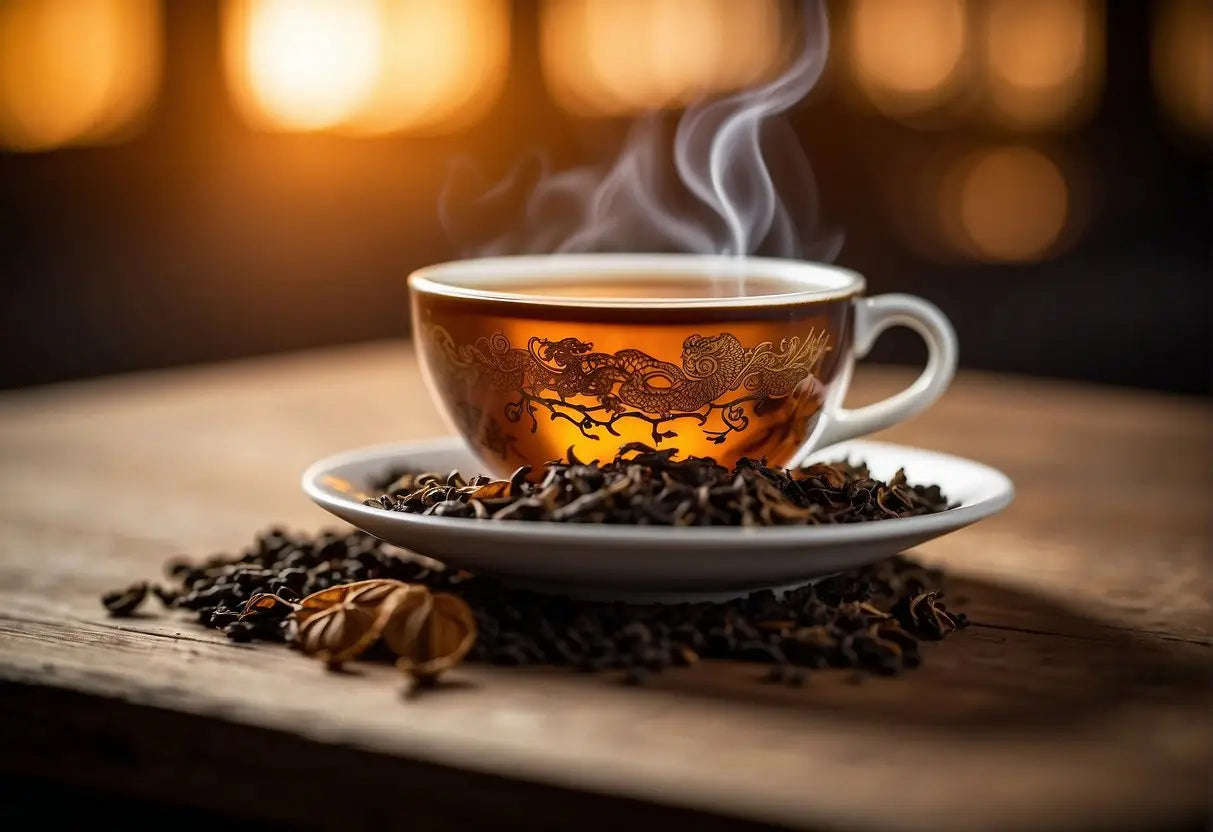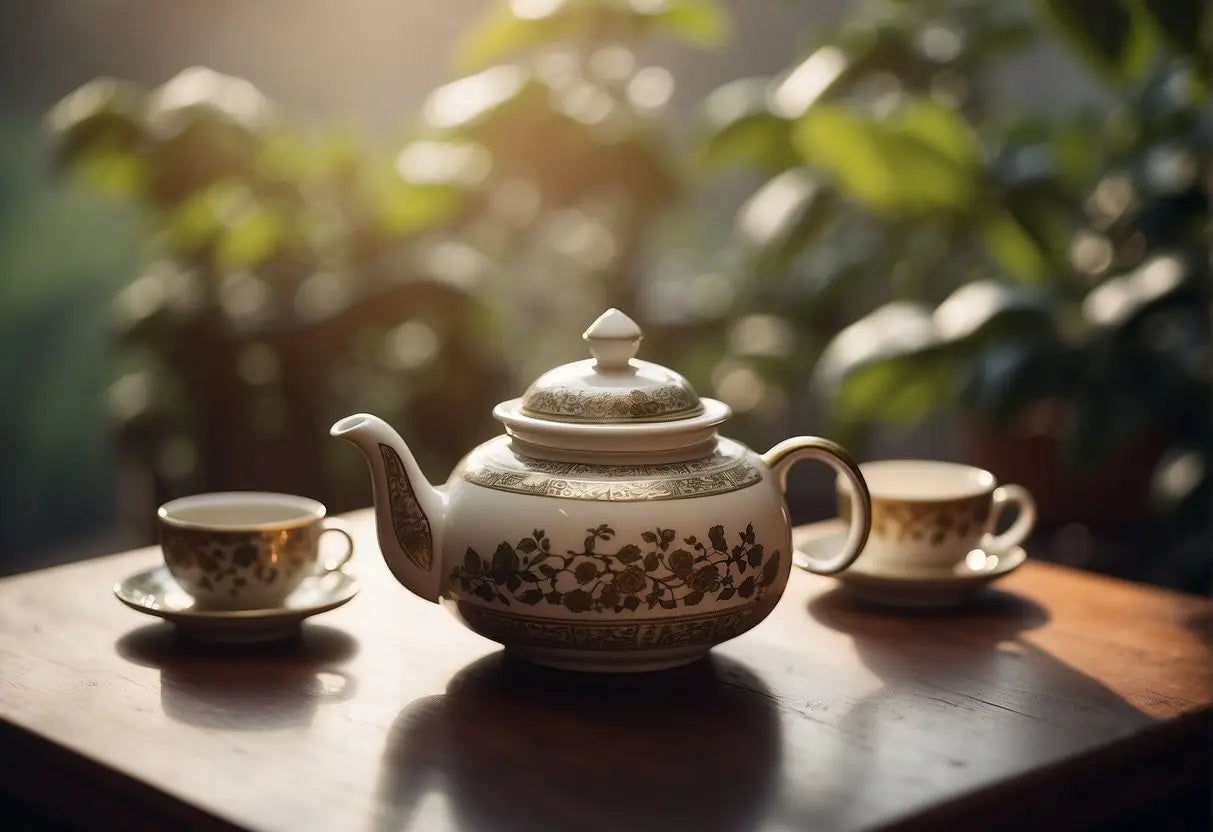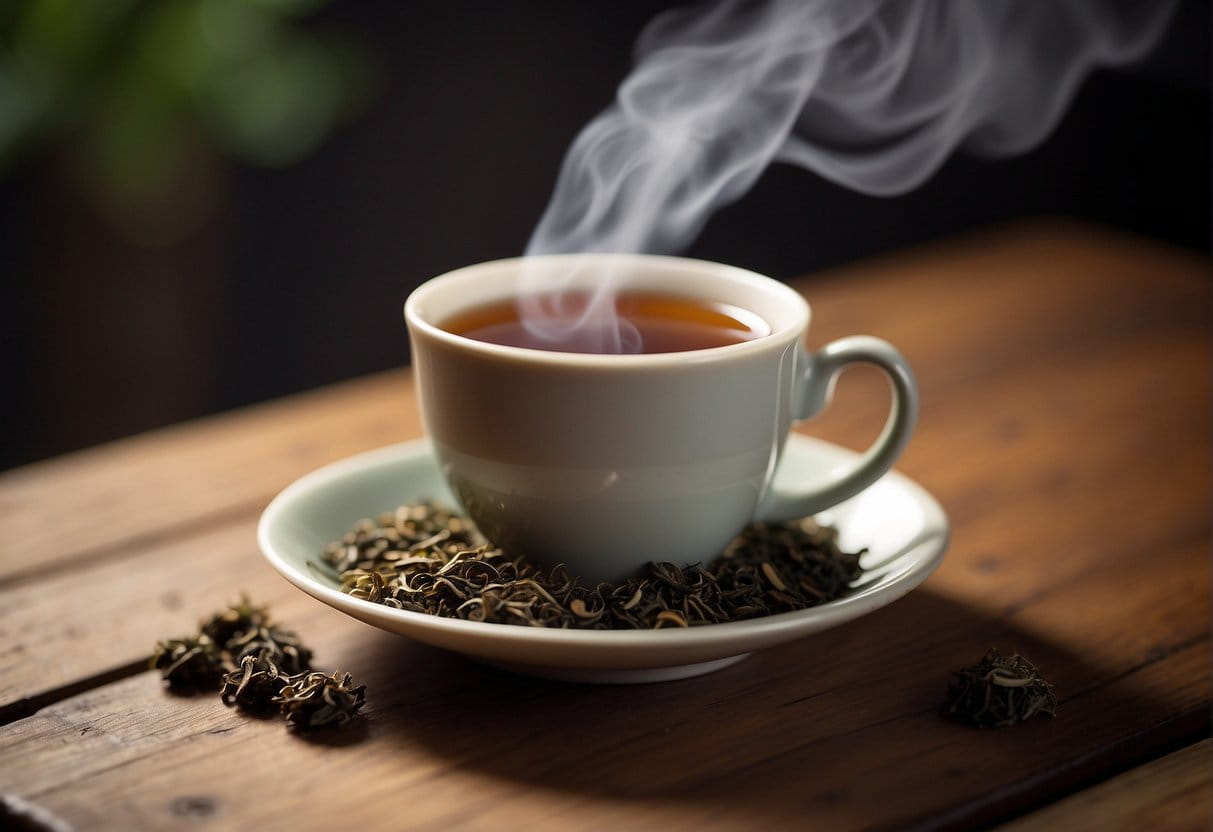Pu-erh Tea Taste
Pu-erh tea is a variety of fermented tea produced in Yunnan province, China. Your experience with Pu-erh's taste profile can vary greatly depending on the type and age of the tea.
Raw Pu-erh (Sheng):
- Initial Brews: Light, grassy, and floral notes with a hint of bitterness.
- Later Brews: Develops a smoother, sweeter flavor as bitterness fades.
Bestsellers
- Flavor Evolution: Complex mix of earthiness, woodiness, and a fruity or floral backdrop.
- Mouthfeel: Often described as silky with a pronounced mellow sweetness.
Ripe Pu-erh (Shou):
- Primary Notes: Earthy, woody, and damp forest floor.
- Secondary Notes: Undertones of mushrooms, dark chocolate, or even coffee may be present.
- Finish: Lingering sweet aftertaste, sometimes with a hint of mineral.
Flavor Modifiers:
- Steeping Time: Longer steeping can enhance the boldness and complexity of flavors.
- Water Temperature: Typically, near-boiling water is used to extract a fuller taste.
Here's a simple table to guide you on the spectrum of Pu-erh tea tastes:
| Tea Type | Flavor Characteristics | Mouthfeel |
|---|---|---|
| Young Sheng | Grassy, floral, bitter | Sharp |
| Aged Sheng | Earthy, mellow, fruity | Smooth |
| Young Shou | Rich, dark, woody | Full-bodied |
| Aged Shou | Smooth, sweet, complex | Velvety |
Your individual palette may detect unique notes and subtleties in each cup. With each session, you might discover new flavors and depths to Pu-erh tea.
Varieties of Pu-Erh Tea

Pu-Erh tea comes in two main varieties: Raw Pu-Erh (Sheng) and Ripe Pu-Erh (Shou), each offering a unique taste profile and aging potential.
Raw Pu-Erh (Sheng)
Raw Pu-Erh, or Sheng, is the traditional form of Pu-Erh tea. It's processed through a natural fermentation that develops over time. When young, Sheng Pu-Erh has a fresh, green taste that can be somewhat astringent, but this mellows into smoother, richer flavors as the tea ages.
- Young Sheng Pu-Erh: Sharp, fresh, and grassy
- Aged Sheng Pu-Erh: Mellow, fruity, and woodsy
Ripe Pu-Erh (Shou)
Ripe Pu-Erh, known as Shou, is a more recent invention that undergoes a sped-up fermentation process mimicking naturally aged Sheng. This variety typically has a deep, earthy flavor, often with hints of dark chocolate or wood.
- Young Shou Pu-Erh: Earthy, musty, and sweet
- Aged Shou Pu-Erh: Rich, smooth, and mellow
Flavor Influences

The distinctive flavor of pu-erh tea is shaped by various factors. You'll discover how terroir, aging, and storage each play a pivotal role in developing the unique taste profile of this renowned tea.
Terroir
The terroir, which refers to the environment where the tea is grown, greatly influences pu-erh tea's flavor characteristics. Key elements include:
- Climate: Warmer and more humid conditions tend to produce teas with a richer and more robust flavor.
- Soil: Minerals found in the soil can impart subtle flavor nuances that become evident after brewing.
- Altitude: Higher elevations are often associated with more complex flavor profiles due to slower leaf growth and denser tea leaves.
Aging Process
Pu-erh tea is unique in that it improves with age, much like fine wine. The aging process spans from several months to many years, transforming the flavors gradually:
Lao Ban Zhang
- Raw Pu-erh (Sheng): Begins with fresh, grassy notes and develops richer, smoother qualities over time.
- Ripe Pu-erh (Shou): Known for its earthy flavors initially, it becomes smoother and more mellow as it ages.
Storage Conditions
How you store pu-erh tea can have a significant impact on its flavor. Consider these tips for optimal storage:
- Humidity: Maintain relative humidity levels at approximately 60-70% to facilitate proper aging without risking mold growth.
- Temperature: Keep at a consistent temperature away from direct sunlight and heat sources to preserve the tea's innate flavors.
- Airflow: Ensure good air circulation while preventing exposure to strong odors that the tea leaves could absorb.
Tasting Notes

When you sample pu-erh tea, pay attention to its complex flavor profile, which varies depending on the tea’s age and fermentation process.
Earthy Undertones
Your first sip of pu-erh is likely to reveal its distinct earthy base. This foundation can range from a rich, loamy soil taste reminiscent of a forest after rain to a more nuanced mineral quality, like wet stones or clay.
- Young Raw Pu-erh: Fresher taste often associated with green tea
- Aged Raw Pu-erh: Deepens into more profound earthy notes over time
- Ripe Pu-erh: Intentionally expedited fermentation process gives it a robust, often woodsy flavor
Sweetness and Floral Notes
As you explore pu-erh tea, you may detect a layer of sweetness and floral accents. These can contradict or complement the earthiness.
- Ripe Pu-erh:
- Sugarcane: A mild sweetness that lingers
- Dried fruit: Hints of plum or dates in aged varieties
- Raw Pu-erh:
- Honey: Natural sweetness present in younger teas
- Floral: Jasmine or rose-like aroma that fades as the tea ages
Camphor and Astringency
Some pu-erh teas can leave a cooling sensation in your mouth, akin to the presence of camphor. This unique trait is often sought after and a sign of a well-crafted pu-erh.
| Age of Tea | Astringency Level | Camphor Presence |
|---|---|---|
| Young Raw | High | Less notable |
| Aged Raw | Moderate | Increases with age |
| Ripe | Low to Moderate | Varies |
- Young Pu-erh: Can be sharply astringent, mellowing over time
- Aged Teas: Develop a smoother sip with a refreshing camphor note
Sensory Experience

When you first approach a cup of pu-erh tea, anticipate a complex sensory journey. Initially, your nose detects earthy, woody aromas, often accompanied by a sweet, floral scent. This fragrance hints at the multiple layers of flavor you're about to experience.
As you take your first sip, let the taste unfold gradually. Pu-erh tea is renowned for its:
- Depth of Flavor: Notice the rich, robust notes reminiscent of aged wood or damp forest soil, presenting a mature profile.
- Sweetness: Despite the earthiness, there's often a natural sweetness, akin to dried fruit or sugarcane.
- Smoothness: Quality pu-erh has a remarkably smooth mouthfeel, sometimes described as creamy or buttery.
- Complexity: Over time, sips may reveal hints of spice or floral subtleties, adding to its complex character.
The following table summarizes the flavor and aroma profile:
| Aspect | Description |
|---|---|
| Aroma | Earthy, woody, sweet |
| Initial Taste | Robust, earth-like |
| Body | Full, smooth, creamy |
| Finish | Complex, sometimes spicy |
Do pay attention to the aftertaste, or the flavor that lingers on your palate. Pu-erh is distinct for its long, evolving finish that may leave you with a pleasantly sweet or slightly mineral taste.
Each pu-erh tea cake or batch can vary significantly, so your experience might differ. These notes are meant as a general guide, and you're encouraged to explore the nuances personally.
Pairing with Food

When selecting food to accompany your pu-erh tea, aim for harmony and balance on your palate. Here are some pairing suggestions:
Complements of Flavor:
- Cheeses: Go for aged varieties like Gouda or Cheddar. The bold flavors of these cheeses can stand up to the earthiness of pu-erh without overwhelming it.
- Chocolate: Dark chocolate, preferably with a high cocoa content, pairs beautifully with the deep, robust notes of pu-erh.
Table 1: Simple Pairing Suggestions
| Food Type | Suggested Pairings |
|---|---|
| Fruits | Dried fruits like figs or dates |
| Nuts | Walnuts, almonds (unsalted or lightly salted to avoid overpowering the tea) |
| Meals | Grilled meats or stir-fry dishes with mushrooms and a touch of soy sauce |
Contrasts of Flavor:
- Spicy Foods: A cup of pu-erh can offer a refreshing counterpoint to moderately spicy dishes.
- Sweets: Traditional Chinese or Japanese sweets can cleanse the palate without competing with the tea's complexity.
Quick Tips:
- Temperature: Serve hot pu-erh with warm dishes and iced pu-erh with cooler fare.
- Textures: Match the mouthfeel; light teas with delicate foods, and aged, stronger pu-erhs with heartier textures.
Remember, your personal preference is paramount; these are starting points to enhance your experience with pu-erh tea.
Cultural Significance

Pu-erh tea holds a revered place in Chinese tea culture, stemming from its long history and unique aging process. Fermentation and aging set this tea apart, and with time, Pu-erh develops a complexity of flavor that becomes a conduit for tradition and ceremony.
Historical Roots: Yunnan Province, the birthplace of Pu-erh tea, is home to a tapestry of ethnic groups. Each group embraces this tea in daily life and festive occasions, often sharing Pu-erh as a sign of hospitality and goodwill.
| Era | Significance |
|---|---|
| Ancient China | Used as bartering currency |
| Tang Dynasty | Celebrated in imperial courts |
| Modern Day | Integral part of Yunnan's culture |
Social Gatherings: You will find that enjoying Pu-erh is a communal affair. Drinking this tea isn't just about taste; it's an opportunity to bond, share stories, and respect the artistry behind each cup.
- Tea Ceremonies: Participating in a traditional Chinese tea ceremony, you'll notice Pu-erh is often the tea of choice due to its esteemed status and rich flavors.
- Gift Giving: It is common to present Pu-erh tea cakes as gifts, symbolizing respect and well-wishes for the recipient’s health and prosperity.
Symbolism: Your experience with Pu-erh may also extend to its symbolic meanings, with its deep hues reflecting grounding and its maturation symbolizing wisdom. It is a tea that encourages you to savor time, just as it has been savored through ages.
Brewing Techniques
When brewing Pu-erh tea, water temperature and infusion time are critical for extracting the desired flavors. Use boiling water (around 212°F or 100°C) for most Pu-erh teas, especially the raw or aged varieties, to help unravel the compressed leaves and fully release their complex flavor profile.
Rinse your tea leaves before steeping. This involves a quick wash with boiling water, which helps to "wake up" the leaves and remove any impurities. Pour off this water after about five seconds.
Below is a simple step-by-step guide to brew your Pu-erh tea:
- Preheat your teapot or gaiwan by swirling hot water in it, then discarding the water.
- Place your Pu-erh tea in the teapot—about one teaspoon of loose leaves or one compressed tea cake or ball.
- Pour hot water over the leaves to rinse them, then quickly discard the rinse water.
- Fill your teapot with hot water and let the tea steep. Infusion times vary:
- For raw Pu-erh, steep for 15-30 seconds.
- For aged or ripe Pu-erh, steep for 60 seconds to start, adding 15-30 seconds for subsequent infusions.
- Gently pour the tea into a cup or faircup through a strainer.
If using a Yixing clay pot, the porous nature of the pot will absorb flavors over time, enhancing future brews.
A table to guide subsequent infusions:
| Infusion Number | Steeping Time | Note |
|---|---|---|
| 1 | 15-60 seconds | Initial steep to unfold the flavors |
| 2 | Add 15-30 secs | A deeper flavor starts to develop |
| 3 | Add 15-30 secs | Flavor continues to deepen |
| 4+ | To taste | Adjust based on personal preference |
Remember, the longer you steep, the stronger the flavor—but beware, oversteeping can lead to bitterness. Adjust the timing to suit your preference, and enjoy exploring the rich tapestry of tastes that Pu-erh tea offers.
Health Benefits and Claims
When exploring the world of pu-erh tea, you may encounter various assertions about its health benefits. It's crucial to differentiate between well-supported facts and less substantiated claims.
Traditional Beliefs and Modern Research
- It is traditionally believed in Chinese medicine that pu-erh can aid in digestion and weight loss.
- Some studies suggest that pu-erh tea may have a positive effect on cholesterol levels.
Antioxidants and Aging
Pu-erh is rich in antioxidants, which are compounds that help protect your cells from damage by free radicals.
- The antioxidants in pu-erh tea are sometimes linked to anti-aging benefits.
- However, the direct correlation between drinking pu-erh and anti-aging effects requires more research.
Caffeine Content and Alertness
With moderate caffeine content, pu-erh can enhance your alertness and focus.
- Pu-erh tea contains less caffeine than coffee but enough to produce a slight stimulant effect.
Digestive Health
- Regular consumption of pu-erh tea is linked with improved digestion.
- The fermentation process unique to pu-erh may contribute to the growth of beneficial gut bacteria.
Remember, while pu-erh tea may offer some health advantages, it should not replace medical treatments. Consult your healthcare provider before making any significant changes to your health routine.
Frequently Asked Questions

This section addresses common inquiries regarding the distinctive flavor profile, health benefits, aroma, pricing, and possible side effects of Pu-erh tea.
What characteristics define the flavor profile of Pu-erh tea?
Pu-erh tea is known for its deep, earthy flavor with notes of woodiness and a smooth, rich body. Its uniqueness is attributed to the fermentation process, which can also impart a slightly sweet or fruity aftertaste.
How does the taste of Pu-erh tea differ from that of black tea?
While black tea is fully oxidized, Pu-erh tea undergoes a fermentation process. This gives Pu-erh a more complex, earthy taste compared to the brisk, malty flavors of black tea.
What health benefits are associated with consuming Pu-erh tea?
Pu-erh tea is believed to aid in digestion, reduce cholesterol, and possibly support weight loss. It contains antioxidants and anti-inflammatory properties, though individual results may vary.
Can you describe the aroma of Pu-erh tea and how it relates to its taste?
The aroma of Pu-erh tea is typically rich and musty, reminiscent of damp soil or fallen leaves, which complements its earthy and mature taste profile.
Why does Pu-erh tea have a more premium price point compared to other teas?
Due to its lengthy and unique fermentation process, as well as its aging potential, Pu-erh tea is considered more scarce and intricate, which contributes to a higher price point.
What potential side effects should one be aware of when drinking Pu-erh tea?
Consumption of Pu-erh tea may lead to caffeine-related side effects in some individuals. It's advisable to monitor your intake if you are sensitive to caffeine.
← Older post Newer post →











